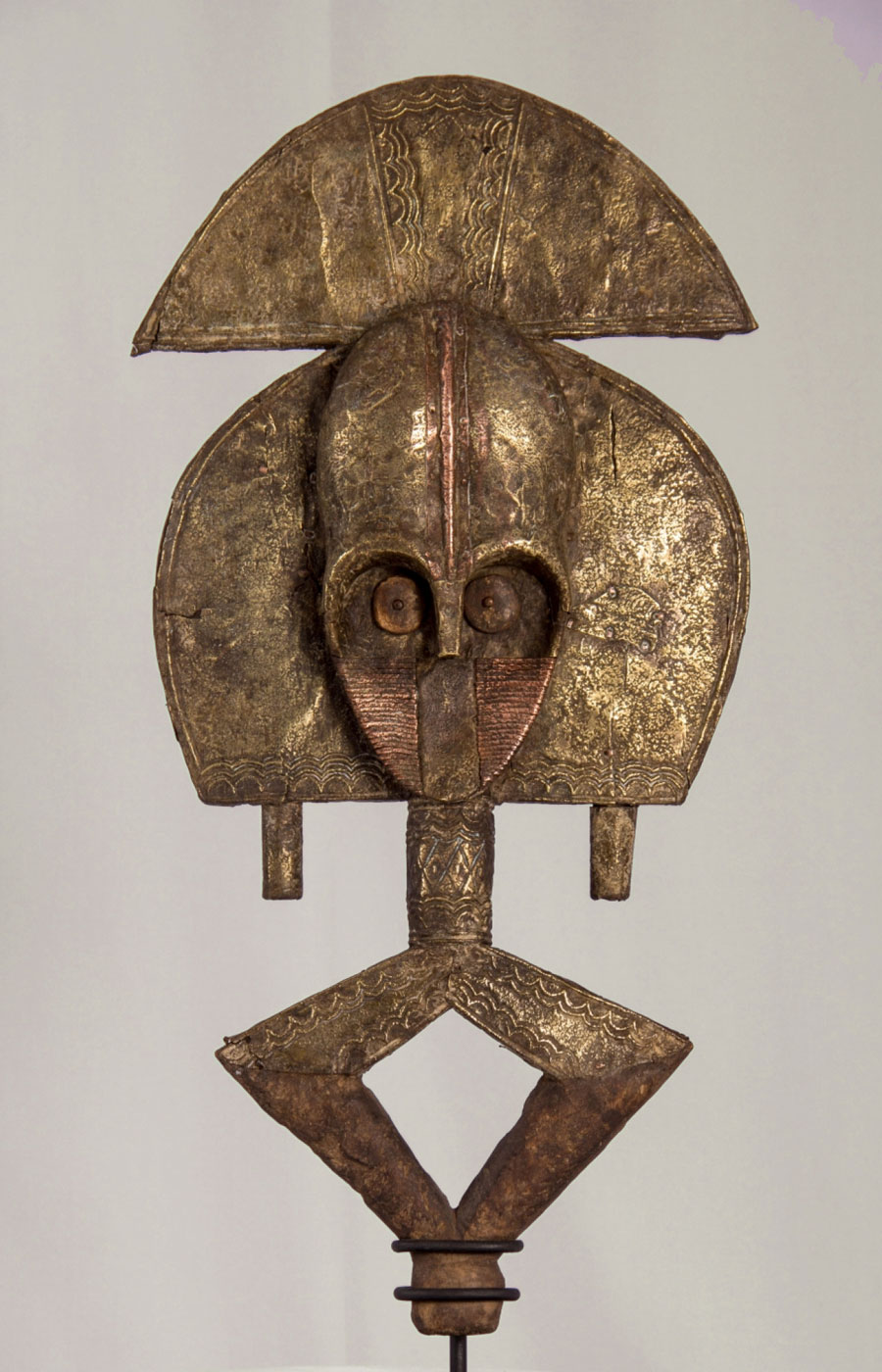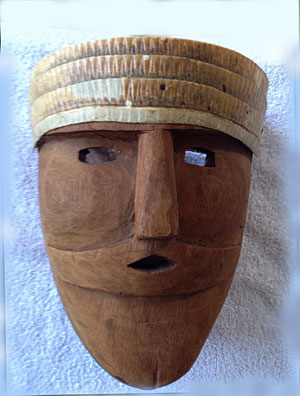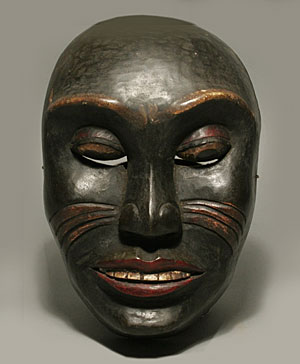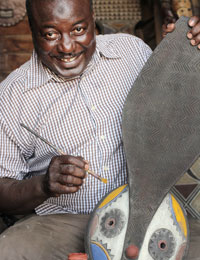 That is because they’re so beautiful. This abstract sculpture would have stunned the great European artists of the 19th century.
That is because they’re so beautiful. This abstract sculpture would have stunned the great European artists of the 19th century.
The Kota live in villages comprising two or more clans. Clans in turn comprise several lineages or family groups that trace their descent from a common lineage ancestor. This is an important point related to their art, for like the Fang, the Kota revere the relics of ancestors.
Ancestor worship formed the core of the family group’s religious and social life. At the death of a chief, the initiates would take from the body of the deceased various relics, which were then decorated with metal and rubbed with powders of multiple magical powers.
The Kota have produced large quantity of statues of ancestors with the diamond-shaped lower part called mbulu-ngulu; these rather two-dimensional sculptures are in wood; symbolic metals were applied to the upper part in strips or sheets to add power. Copper inparticular was identified with longevity and power.
Kota figures represent an extremely stylized human body, reduced to shoulders and “arms,” in emptied lozenge shape, surmounted by a large face framed by an ample coiffure with hanging tresses. The face, always oval, may be concave (female), convex (male) or concave-convex, with a forehead in quarter-sphere (also male).
The reliquaries were kept outside the homes, in huts at the edge of the village. Only the initiates of the lineage had access to this sacred place. At the time of initiation in the reliquary cult, the clans would meet to perform communal rituals; each clan’s chief would dance holding the reliquary.
Some reliquaries featured a large figure representing the lineage founder along with some smaller figures representing his successors. There are figures with two identical or different faces made on two opposite sides of the flat head. Copy from RandAfricanArt.com. A





